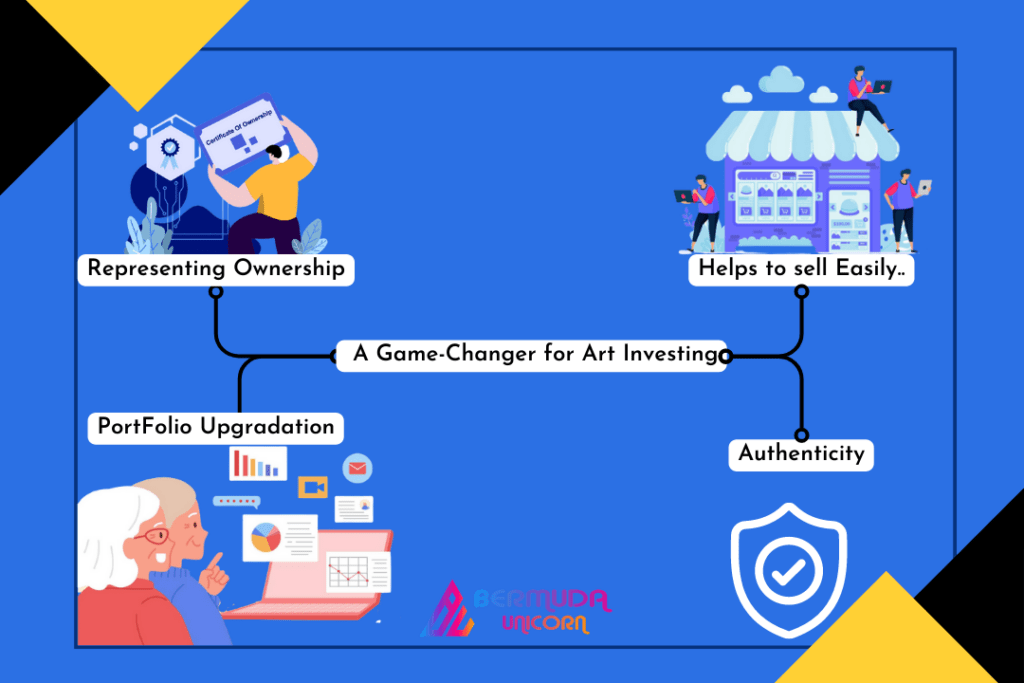![]()

The use of non-fungible tokens (NFTs) is the newest trend in art investing, allowing for fractional ownership of digital art. However, concerns remain about the long-term viability of this market and the environmental impact of blockchain technology. Despite this, many experts believe that NFTs are the future of art investing, and other new technologies such as virtual reality and artificial intelligence could also shape the market. Investors should stay up-to-date with these developments to make informed investment decisions.
NFTs: A Game-Changer for Art Investing
NFTs are unique digital assets that use blockchain technology to verify ownership and authenticity. They have become a popular way for artists to sell their digital artwork and for collectors to invest in one-of-a-kind pieces. NFTs solve the problem of authenticity and ownership for digital artists, who have struggled to monetize their work in the past. With NFTs, artists can sell their work as a one-of-a-kind piece, similar to how physical art is sold at auctions.

One of the key advantages of NFTs is that they provide a way for artists to monetize their digital artwork. Before NFTs, it was difficult for digital artists to sell their work in a way that ensured authenticity and ownership. NFTs solve this problem by creating a unique token that represents ownership of the artwork. This allows artists to sell their work as a one-of-a-kind piece, similar to how physical art is sold at auctions.
NFTs also provide a new investment opportunity for collectors. In the past, art collectors were limited to investing in physical art pieces. However, with the emergence of NFTs, collectors can now invest in digital art as well. This opens up a new market for art investing and provides collectors with more options for diversifying their portfolios.
The Future of NFTs in Art Investing
While NFTs have already made a significant impact on the art world, their full potential has yet to be realized. One area where NFTs could have a major impact is the art market’s democratization. In the past, the art market has been dominated by wealthy collectors who could afford to invest in high-priced pieces. However, NFTs provide an opportunity for smaller investors to get in on the action. With NFTs, investors can purchase fractional ownership of digital art pieces, allowing them to invest in high-end art without breaking the bank.
Another area where NFTs could have a significant impact is in the way artists are compensated for their work. In the traditional art market, artists typically receive a one-time payment for their work. However, with NFTs, artists can receive a percentage of the sales every time their work is sold. This creates a more equitable system for artists and provides them with ongoing revenue streams.
NFTs have also created a new market for art collectors. In the past, collectors were limited to purchasing physical art pieces that they could display in their homes or offices. With NFTs, collectors can invest in digital art pieces that they can display on their screens or other digital devices. This opens up a new market for collectors who are looking for something unique and cutting-edge.
Beyond NFTs: Other Emerging Trends in Art Investing
While NFTs are currently the talk of the art world, there are other emerging trends that are worth watching. One of these trends is the rise of art funds. Art funds are investment vehicles that allow investors to pool their money together to purchase high-end art pieces. This provides investors with a way to diversify their portfolios and invest in the art market without having to purchase individual pieces themselves.

Another emerging trend is the use of artificial intelligence in art investing. AI technology can analyze large amounts of data to identify trends and patterns in the art market, which can be used to make more informed investment decisions. For example, AI can analyze sales data to identify which artists and art styles are performing well, and use this information to make investment recommendations.
Blockchain technology, beyond NFTs, also has the potential to transform the art market. One use case is the use of blockchain to create transparent art provenance. By using blockchain, an artwork’s entire ownership history can be tracked, creating a more secure and transparent art market. This can be particularly useful for high-value art pieces, where authenticity and ownership are crucial.
Additionally, virtual reality (VR) and augmented reality (AR) technologies are also emerging as new tools for art investment. VR and AR can create immersive experiences for collectors, allowing them to view and interact with digital art pieces in new ways. This technology can also create new revenue streams for artists and galleries, such as virtual art exhibitions and VR/AR experiences.
Conclusion
The art world is undergoing significant changes due to the emergence of digital art and blockchain technology. NFTs have emerged as a game-changer for art investing, providing a new way for artists to monetize their digital artwork and for collectors to invest in unique, one-of-a-kind pieces. However, the full potential of NFTs and other emerging trends in art investing is yet to be realized.
NFTs have the potential to democratize the art market and create more equitable compensation for artists. AI technology can help investors make more informed investment decisions, while blockchain technology can create a more transparent and secure art market. VR and AR technologies can also create new revenue streams for artists and galleries.
As the art market continues to evolve, it is essential for investors and collectors to stay up-to-date with emerging trends and technologies. While NFTs have already made a significant impact on the art world, there is no doubt that more changes and disruptions are yet to come. As with any investment, it is important to do your research and understand the risks and potential rewards before investing in art, whether through NFTs or traditional means.
